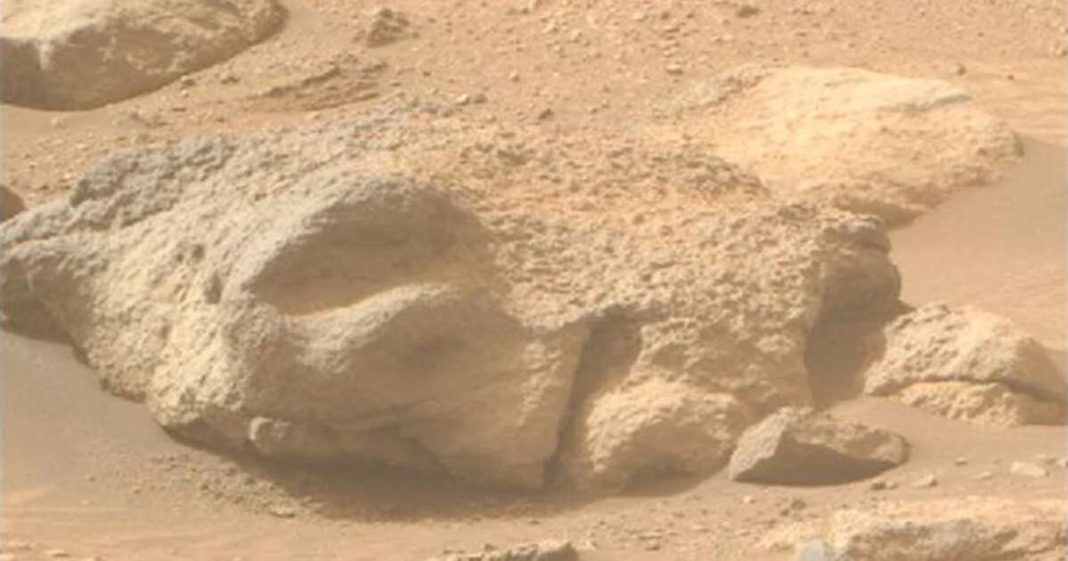NASA’s Perseverance rover, which has been exploring Mars since 2021, has once again made headlines with a startling discovery. On September 27, 2024, the rover captured an image of a rock that bears an uncanny resemblance to a severed human head. While Mars has often provided eerie images of strange rock formations, this particular photo has stirred up excitement, confusion, and intrigue among both scientists and space enthusiasts.
Read More: China to look for life on Mars
The image, taken using the rover’s Right Mastcam-Z camera, immediately caught attention due to the rock’s grim, decaying appearance. Upon first glance, it seemed to be a desiccated head lying in the dust, under the harsh Martian sun. However, while it appears unsettling, this “head” is nothing more than a rock weathered by Mars’s harsh environment.
Power of Pareidolia
This isn’t the first time an image from Mars has triggered such a reaction. The phenomenon behind it is known as pareidolia, the tendency of the human brain to recognize familiar shapes, such as faces, in random patterns. In this case, the peculiar weathering of the rock combined with its orientation to the camera created a resemblance to facial features like a brow ridge, nose, mouth, and chin. However, the reality is much less mysterious.
According to experts, the rock in question is likely a chunk of sedimentary sandstone. This type of rock is common on Mars, especially in areas where scientists believe water may have once flowed. Despite its eerie shape, there is no evidence to suggest that this rock holds any significance beyond its unique formation.
Mars and the Human Imagination
Mars has long fueled human curiosity, particularly around the possibility of extraterrestrial life. The idea of finding life on the Red Planet has been a recurring theme in scientific exploration and pop culture. So far, no evidence of life has been discovered on Mars, but that hasn’t stopped scientists from searching. Robotic explorers like Perseverance have been deployed with advanced instruments to study Mars’s surface, seeking signs of ancient habitability.
In addition to this “human head” rock, Mars missions have captured images of rocks resembling animals, spoons, doorways, and even mythical creatures like Bigfoot. These formations, though, are simply the result of natural erosion, lighting, and our brain’s need to make sense of chaotic patterns.
Understanding Mars’s Geological History
While the head-like rock may have captured the public’s attention, Perseverance’s mission continues to reveal valuable scientific insights. The rover has been exploring ancient river channels, like Neretva Vallis, and uncovering a wide array of rock types that help scientists piece together Mars’s geological history. Recently, the rover discovered blue rocks and a boulder named “Atoko Point,” which scientists believe may have originated from subsurface magma or been transported by ancient water flows.
These findings are crucial for understanding Mars’s past, including its volcanic activity, water flow patterns, and potential for past habitability. The discovery of diverse minerals and rock formations offers scientists clues about how Mars’s landscape has evolved over millions of years.
Read More: NASA missions for Mars after conquering Moon
While the mysterious rock formation might not signify alien life, the Perseverance rover’s ongoing discoveries are paving the way for future exploration. NASA and other space agencies have ambitious plans for crewed missions to Mars, which could one day provide humans the opportunity to explore the planet in person. Until then, robotic explorers like Perseverance will continue to offer a window into the enigmatic world of Mars.














